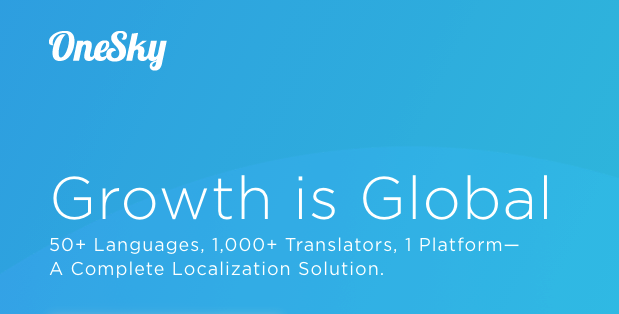Globalization or Localization? Deciphering the Best Strategy for Your Business
Understanding Globalization
Globalization defines the very intentional (and complex) process of preparing your business to be seen by the rest of the world—laying a framework of success for ongoing successful expansion.
Taking a global approach from the start is key to replicable and consistent growth pathways that you can use for every new product or service you launch. There are plenty of perks to entering new markets with a strong globalization strategy, including:
- Streamlined expansion into new markets: Whether you’re trying to break into global markets or local markets, your globalization strategy will streamline and simplify your process. Consider it a roadmap to success with your target audience.
- More comprehension in a brand approach to scalability: It feels nearly impossible to cover every single base when it comes to brand expansion.
- Some different countries and foreign markets may require more “hoops,” which can disrupt rigid workflows. Additionally, a globalization process is complex, featuring all different requirements that have to be fulfilled (often concurrently!) A strong strategy offers a more “all-in-one approach” for everyone involved, keeping your departments engaged and your team members efficient.
- Efficient and strategic resource allocation: When there are sound globalization concepts throughout your business strategy, you’ll enjoy more efficient use of resources. Time and money are valuable—and keeping your team in their highest level of utility at all times is attainable when you’re led by a foolproof globalization strategy.
Let’s get into what localization is and how it plays with globalization, as well as key differences to note as you work to build the most inclusive and effective strategy yet.
Understanding Localization
Localization takes on a more niche role in the hierarchy of internationalization, globalization, and localization.
While globalization lays the groundwork for expansion, the localization process encompasses the “boots on the ground” steps it takes to move the needle from concept to reality. In localization, for example, there will be research conducted into different markets and preferences of different cultures. This, in turn, can be used to inform translation teams as you move from English to your target market’s language.
In the context of data programming and software development, localization takes on more of an operational role in the expansion process, informing teams on visuals and code elements (such as date formats being written right to left instead of left to right) that current prospective clients might be expecting.
Globalization vs. Localization: Key Differences
While localization strategy elements and globalization strategies are complementary to each other, there are a few key differences to be made aware of:
- Nuance: Globalization and localization share the same goals. While one focuses on the macro scale (such as in the case of globalization), localization takes a more micro approach—distilling down and executing the exact elements that a specific culture would expect to see in a product or service.
- Focus: Globalization will take your brand workflow in many different directions, widening the proverbial “net” to catch a range of global consumers across target markets and your supply chain. Localization focuses instead on local audience localization strategy, applying concepts to tangible assets (such as translation in different languages, user interface shifts and general alignment).
- This is generally done in a single, focused direction or effort with just a few departments involved. Localization, in this sense, stands in stark contrast to globalization, which generally involves preparation and activity from every department.
- Scale: The scale of strategy is decidedly different between globalization and localization, with globalization taking a multinational, tandem approach (in most cases). Localization is a subset of this effort, focusing on providing the optimal user experience for members of a specific market or specific region.
Related to Business Expansion
Now that we’ve outlined the clear differences between globalization (g11n) and localization (l10n), we can take a look at specific examples of each in industry economies.
We’ll begin with one of the largest companies in the food business—McDonald’s.
The chain is known for delicious food and distinct red-and-yellow branding…but did you know they don’t keep the same menu on a global level?
The chain embraces the concept of unique experiences for a global audience, shifting to consumer preferences regionally to protect the customer experience of its customer base. McDonald’s has taken the time and place to lay the infrastructure for this (via a robust globalization strategy), which fuels a well-executed localization strategy.
Examples of both in tangible brand elements include:
- Menu changes: Foreign languages (such as Arabic) may require right-to-left reading rather than traditional English-style left-to-right. While this notation and the translation process would generally be housed under localization, globalization would entail the back-end prep work needed to execute—such as preparing the site coding to have different number formats and multilingual presentation and translation support for all global audience members.
- Advertising: Adverts that work well in Western countries may not comply well with local customs (or flow well with local language). This notation and realization often come in the localization stage, precluded with alternative options that are facilitated by a five-star globalization strategy.
Successful Strategies
Ready to dig into g11n and l10n in your organization? Here are a few successful strategy keynotes to keep in mind:
- Focus on the customer first. This concept will guide you in both g11n and l10n efforts, ensuring that you have the most effective, customer-led strategy possible.
- Create multiple (sets) of options in both your g11n and l10n efforts. Creating flexibility in your processes proactively will save you significant time and money in the future, at every level.
- Create continuous research and adaptation cycles: Once localization and translation tasks have been completed., it can be tempting to move to the next phase. However, ongoing research and adaptation can help your brand to stay ahead of the local trends and preferences of any given region (worldwide!)

OneSky is Your Partner in Globalization and Localization
Globalization and localization strategies are integral to your business growth. Keeping your clients as the core focus of each will facilitate replicable and scalable success for your brand, no matter what industry you serve.
Not sure where to start? No problem! Whether you’re just beginning to create your strategies or if you’re in the middle of your transition experience, the team at OneSky is here to help. Our experts can translate across 50+ languages, operating strategically out of our comprehensive and industry-leading translation management service. Connect with us online for more information and to get started today!




 Written by -
Written by - 


 Written by
Written by 


